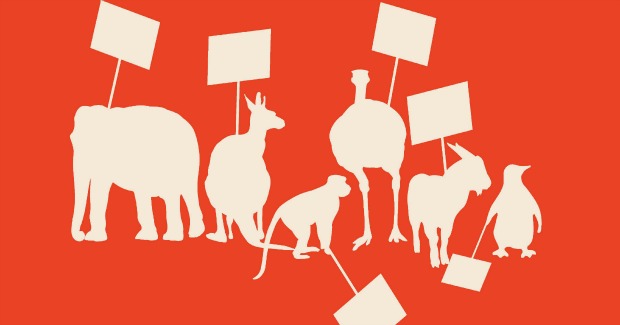
When many people encounter the term „Animal Rights“ (sometimes followed by the word activist), they think of long-haired Hippie-Types chaining themselves to trees or bison, burning down factory-farms, and throwing red paint („lamb’s blood“) on people wearing fur coats. In my Animal Studies course, I encountered a few philosophers and ethicists writing on the subject of „Animal Rights“ (although not all agree with the use of this term) and discovered that even among pro-vegetarian thinkers, there exist many different theoretical and practical positions on how non-human animals should be considered and treated by humans.
Two of the classic positions come from the philosophers Peter Singer and Tom Regan, and divide themselves along the lines of „Animal Liberation“ vs. „Animal Rights.“ While both philosophers agree that the current treatment and status of non-human animals by modern nations is deplorable and requires practical changes in cultural attitudes and laws, they disagree on the theoretical framework upon which these changes should be based. Singer, a philosopher whose ethics follow utilitarian principles (killing one to save many is acceptable), calls for „Animal Liberation,“ in that he wishes to see the interests and feelings of non-human animals (particularly sentient ones, like Apes) taken into consideration by humans. For Singer, actions which decrease the total amount of suffering in the world, and increase the total amount of pleasure, are morally desirable, but he does not go so far as to posit that non-human animals have „Rights“ in the same way that humans might. He calls simply for their interests to be taken into consideration.
Regan, on the other hand, calls for the assignation of „Animal Rights,“ similar to those rights we call „Human Rights.“ For him, each animal (human- or non-) is a „subject-of-a-life,“ and as such, has intrinsic value worthy of a moral right to Life, Dignity, and Flourishing.